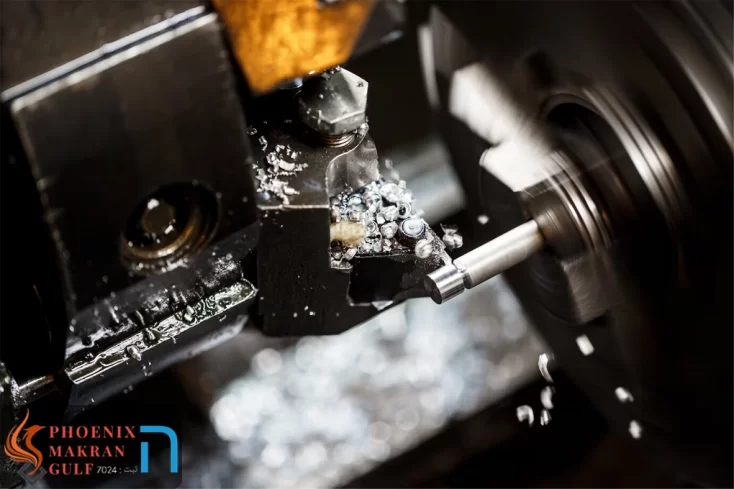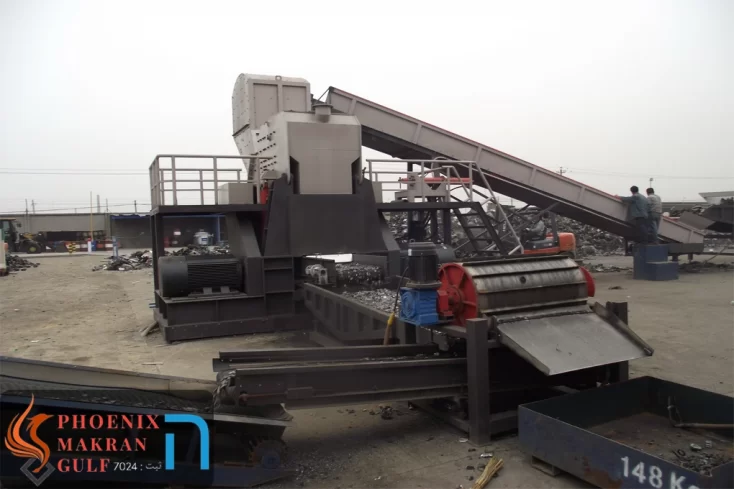Melting points of metals
In this article, we examine the melting point of different metals along with a brief explanation.
aluminium
is a silver-colored, low-density, non-ferrous metal used in a variety of commercial applications.
Aluminum is both an important input for several critical energy transfer technologies and a significant source of CO2. Direct emissions from the global aluminum sector have been steadily increasing over the past decade, driven by increased production that is expected to continue to grow due to population and economic growth.
Aluminum is used in various products such as cans, foil, kitchen utensils, window frames, airplane parts, industrial devices, etc. This is due to its special features.
The melting point of aluminum is 660 degrees Celsius or 1220 degrees Fahrenheit.
brass
Brass is an alloy of copper and zinc, but varying amounts of other elements can be added.
This metal is a descriptive term used to describe a wide range of copper and zinc alloys that are durable, strong, long lasting and corrosion resistant. Generally, the percentage of copper ranges from 60% to over 80% while the percentage of zinc varies from less than 10% to more than 40%.
When brass metal has more than 30% zinc, it is called high brass. Increased zinc content makes brass more susceptible to corrosion, as zinc reacts with exposure to air and water to form a zinc oxide layer.
Brass, with a high percentage of copper, is known as red brass or gunmetal. Increasing the percentage of copper, above 85%, makes the brass malleable, malleable, and resistant to corrosion. Red rice has excellent machinability, so it can be easily cut, shaped and drilled. The disadvantage of red rice is its cost, which is higher due to its high copper content.
The ancient Romans used brass mainly in utensils, armor, jewelry, and pins or hooks.
The melting point of brass metal is 930°C (1710°F).
Aluminum bronze
Aluminum bronzes or aluminum bronzes are more valuable than other bronze alloys due to their higher strength and corrosion resistance. These alloys are resistant to tarnishing and exhibit low atmospheric corrosion rates, low oxidation rates at high temperatures, and low reactivity with sulfur compounds and other combustion byproducts. They are also resistant to corrosion in seawater.
Aluminum bronze alloys are a family of copper-based alloys that use iron and nickel in their composition. But they rely on aluminum as the main alloying element. Aluminum significantly increases strength to the point where it is similar to carbon steel. An added benefit is that aluminum bronze also has excellent corrosion resistance. It is this strength and resistance to corrosion that led to the early use of aluminum bronze.
Aluminum bronze is the highest strength standard copper-based alloy.
The melting point of aluminum bronze is 1027-1038 °C (1881-1900 °F).
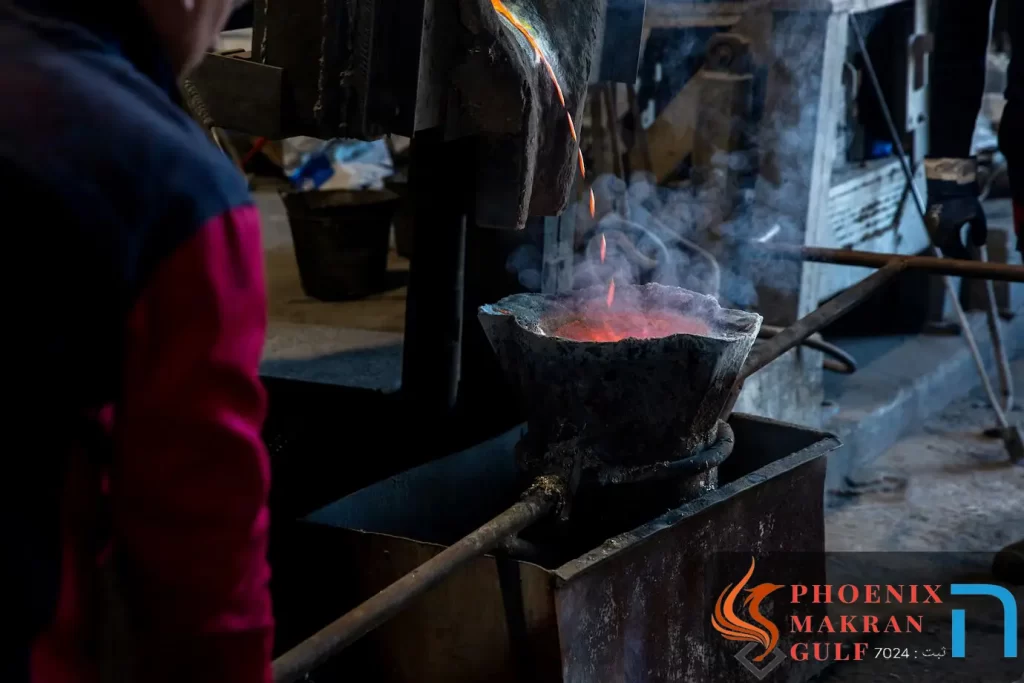
Chrome
Chromium is an essential component of all stainless steels, constituting at least 10.5% of the alloy content.
Steel is a hard, gray metal that has high polishability and is used in alloys to increase strength and corrosion resistance.
Chromium is a natural element that is found in rocks, animals, plants, soil and in dust and volcanic gases. Chromium exists in different forms in the environment. Chromium is used for steel making, chrome plating, paints, textile industry as desiccant, and even wood preservation.
Chrome has a variety of colors due to the presence of different amounts of chrome.
The melting point of chromium is 1860 °C (3380 °F).
See also: Two-shaft shredder machine
copper
Copper alloys have good to excellent corrosion resistance, high thermal conductivity, and very high electrical conductivity.
Copper is a reddish metal. It reflects red and orange light and because of its band structure it absorbs other frequencies in the visible spectrum, so it has a nice reddish color. It is malleable, flexible and an excellent conductor of heat and electricity. It is softer than zinc.
Copper has a low chemical reaction. In humid weather, it slowly forms a green layer called patina. This coating protects the metal from further attack.
Copper is a very flexible metal that is a good conductor of electricity and heat. Copper is found in the free metallic state in nature.
The melting point of copper is 1084 °C (1983 °F).
gold
Gold is one of the most desirable and useful metals in the world. Not only can this precious yellow metal be shaped beautifully, it conducts electricity and does not tarnish. These properties make it the metal of choice for the industrial, medical and technological industries.
Gold is a dense shiny yellow precious metal. Gold has several properties that have made it very valuable throughout history. It is attractive in color and brightness, reasonably durable, highly malleable, and is usually found in nature in relatively pure form. Gold is incomparable to any other metal because of its perceived value since ancient times.
Gold is one of the densest metals. It is a good conductor of heat and electricity. It is also the softest and most malleable and flexible elements.
Chemically, noble metals resist oxidation and corrosion in humid air. They also have varying degrees of resistance to acids. This group includes the following elements: ruthenium, rhodium, palladium, osmium, iridium, gold, silver and platinum.
The properties of noble metals have the following characteristics:
These metals exist all over the world, but not enough to depreciate them.
They are considered precious metals and are used as currency (store of value).
Many cultures, historically and currently, consider these metals to be beautiful, sensual, and glamorous, which adds to their appeal.
These metals are also malleable, making them practical choices for jewelry making.
For all these reasons, gold, silver, and platinum continue to enjoy considerable popularity as jewelry metals.
The melting point of gold is 1063 °C (1945 °F).
See also: What is Casting? | Types of metal castings along with applications
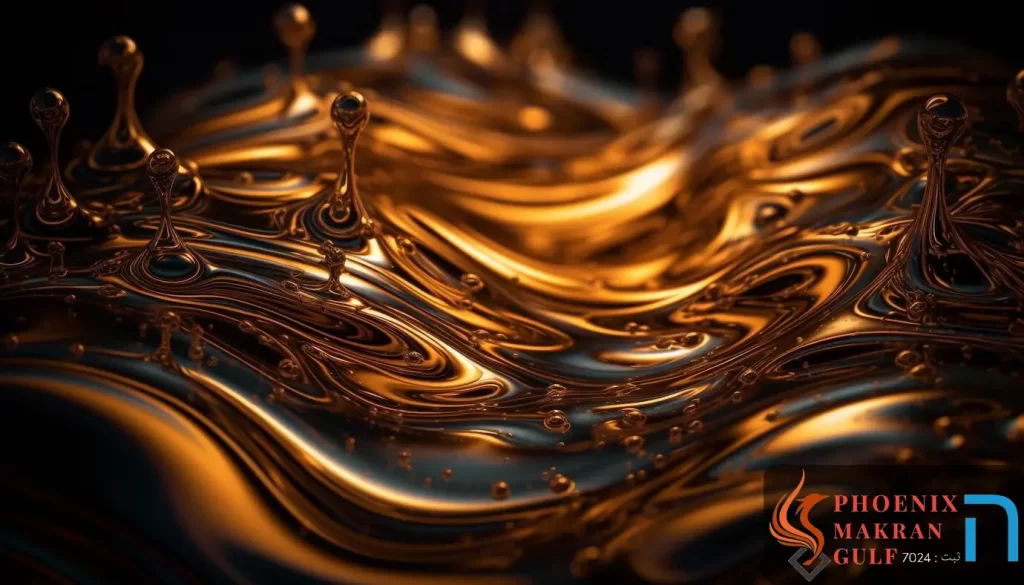
Cast iron
Cast iron is an alloy of iron that contains 2 to 4 percent carbon along with varying amounts of silicon and manganese and traces of impurities such as sulfur and phosphorus. It is made by revitalizing iron ore in a blast furnace. Cast iron is cast into raw ingots, or cast and hardened.
Cast iron was a cheaper engineering material than wrought iron because it did not require heavy refining and hammering, and it was lower in tensile strength. Nevertheless, its load bearing capacity made it the first important structural metal and was used in some of the first skyscrapers. In the 20th century, steel replaced cast iron in construction, but cast iron still has many industrial uses.
Cast iron is a term used to describe a family of metal alloys whose main alloying element is iron. Because of its name, some people tend to think that cast iron is essentially 100% iron. It is not true. In fact, carbon steels contain more iron than cast irons.
For a predominantly iron alloy to be considered cast iron, it must contain more than 2% carbon for the final alloy to be considered cast iron.
The melting point of cast iron is 1204 °C (2200 °F).
Metal Lead
Lead is a soft, silver-white or gray metal. It is very malleable, flexible and dense, and it is a poor conductor of electricity. Known in antiquity and believed by alchemists to be the oldest metal, lead is extremely durable and resistant to corrosion, as evidenced by the continued use of lead water pipes installed by the ancient Romans.
Lead metal is generally readily available in most volumes.
Lead metal is one of the most essential elements in chemistry. For centuries, it has been used to make various products, including bullets, batteries, and radiation shields. There are different types of lead metal, each with unique characteristics and properties.
The melting point of lead is 328 °C (622 °F).
nickel
Nickel is a metallic element with a shiny and silvery white appearance. It is the fifth most common element on Earth and is widely present in the Earth’s crust and core. Nickel along with iron is also a common element in meteorites. Nickel occurs naturally in soil and water. It is also an essential nutrient for plants.
Harder than iron, nickel is more familiar because of its use in coinage, but is more important as a pure metal or in alloy form for many domestic and industrial applications.
The melting point of nickel is 1453 °C (2647 °F).
platinum
Platinum, the chemical element, is the best known and most widely used of the six very heavy metals, precious and silvery white, soft and malleable, and has a high melting point and good corrosion resistance. For example, its surface remains bright after reaching white heat in the air. Small amounts of iridium are usually added to produce a harder and stronger alloy that retains the benefits of pure platinum.
Platinum is named because of its silver gray-white color. With an availability of 5 g/kg in the earth’s crust, it is one of the rarest elements and therefore very valuable. Although this material was discovered relatively later by European scientists, it has been found in Egyptian tombs dating back to 1200 BC.
The melting point of platinum is 1770 °C (3218 °F).

silver
Silver, a shiny white metal valued for its decorative beauty and electrical conductivity.
Silver metal is one of the precious metals along with gold and platinum group metals. Due to its relative rarity, bright white color, malleability, malleability and resistance to atmospheric oxidation, this metal has long been used in making coins, ornaments and jewelry. Silver has the highest electrical and thermal conductivity known among all metals and is used in the manufacture of printed electrical circuits. It is also alloyed with elements such as nickel or palladium for use in electrical contacts. It is also used as a catalyst due to its unique ability to convert ethylene to ethylene oxide, which is a precursor to many organic compounds. Silver is one of the noblest—that is, the least chemically reactive—of the transition elements.
The melting point of silver is 961 °C (1762 °F).
Carbon steel
Carbon steel is a type of steel that contains carbon as the main alloying element and other elements are present in smaller amounts. Due to its high strength and low price, this metal is usually used in the construction of many products and structures.
Carbon steel can be classified into different grades based on its chemical composition and mechanical properties, such as low carbon steel (mild steel), medium carbon steel, high carbon steel and super carbon steel. Each grade has its own uses and applications depending on the desired properties of the final product.
Medium to high carbon steel is commonly used to make machine components such as gears, crankshafts, and shafts. High strength and especially high hardness make it an ideal choice for a wide range of tooling applications.
Carbon element is present in all steels. Whenever this carbon is the main alloying element, the alloy is considered a carbon steel.
The melting point of carbon steel is 1425–1540 °C (2597–2800 °F).
stainless steel
It is an iron and steel alloy with increased corrosion resistance compared to carbon steel.
Stainless steel, any of a family of alloy steels that typically contain 10 to 30 percent chromium. Chromium, in connection with the low carbon content, provides significant resistance to corrosion and heat. Other elements such as nickel, titanium, aluminum, niobium, copper, nitrogen, sulfur, phosphorus or selenium may be added to increase corrosion resistance in certain environments, increase oxidation resistance and create special properties.
While stainless steel must contain at least 10.5% chromium, the exact components and proportions vary based on the requested grade and intended use of the steel.
All stainless steels are highly resistant to corrosion.
The melting point of stainless steel is 1375-1530 °C (2500-2785 °F).
See also: Separation of precious metals
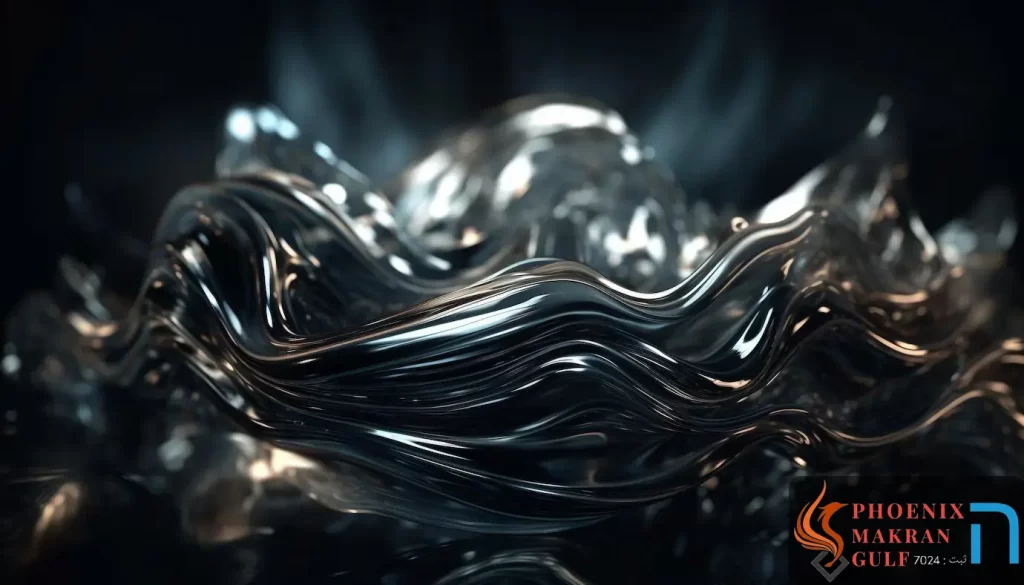
Titanium
Titanium is a shiny silvery gray metal. It is a metal with a light-weight structure, with high strength and low corrosion, and is used as an alloy for high-speed aircraft parts.
Commercially pure titanium and titanium alloys are produced as near-pure titanium powder metals, titanium aluminides, highly engineered titanium castings, and titanium forgings and machined titanium components.
Titanium is very hard, light, corrosion resistant, which is combined in various minerals.
In metallurgy, it is used to remove oxygen and nitrogen from steel and harden it.
The melting point of titanium is 1670 °C (3038 °F).
Zinc
Zinc is a fast-melting metal, which is essential for life and is one of the most widely used metals and is of considerable commercial importance.
It is on a shiny blue-white metal. It is brittle and crystalline at ordinary temperatures, but becomes ductile and malleable when heated to between 110 and 150°C. It is a relatively reactive metal that combines with oxygen and other non-metals and reacts with dilute acids to release hydrogen.
It is important to galvanize this amount of consumption, more than 50% of metal metals are galvanized into steel, but it is also important in the preparation of special alloys. It is used for negative plates in some electric batteries and also for roofs and gutters in building construction.
The melting point of zinc is 420 °C (787 °F).
tungsten
Tungsten, also called tungsten, chemical element, an extremely strong refractory metal, used in steels to increase hardness and strength, and in lamp filaments.
This element is known as one of the hardest and most resistant things in nature. It is very dense and almost impossible to melt. Pure tungsten is a silver-white metal, and when ground into a fine powder, it can be combustible and spontaneously ignite.
Tungsten is used in many ways because it is very strong and durable. It is very resistant to corrosion and has the highest melting point and the highest tensile strength of any element. However, its power comes when it is made into compounds. Pure tungsten is very soft.
Tungsten is a shiny, grayish-white metal that is solid at room temperature. which has the highest melting point and the lowest vapor pressure among all metals and has the highest tensile strength at a temperature of more than 1650 degrees Celsius. It has very good corrosion resistance and is only slightly corroded by most mineral acids.
The melting point of tungsten is 3400°C (6152°F).
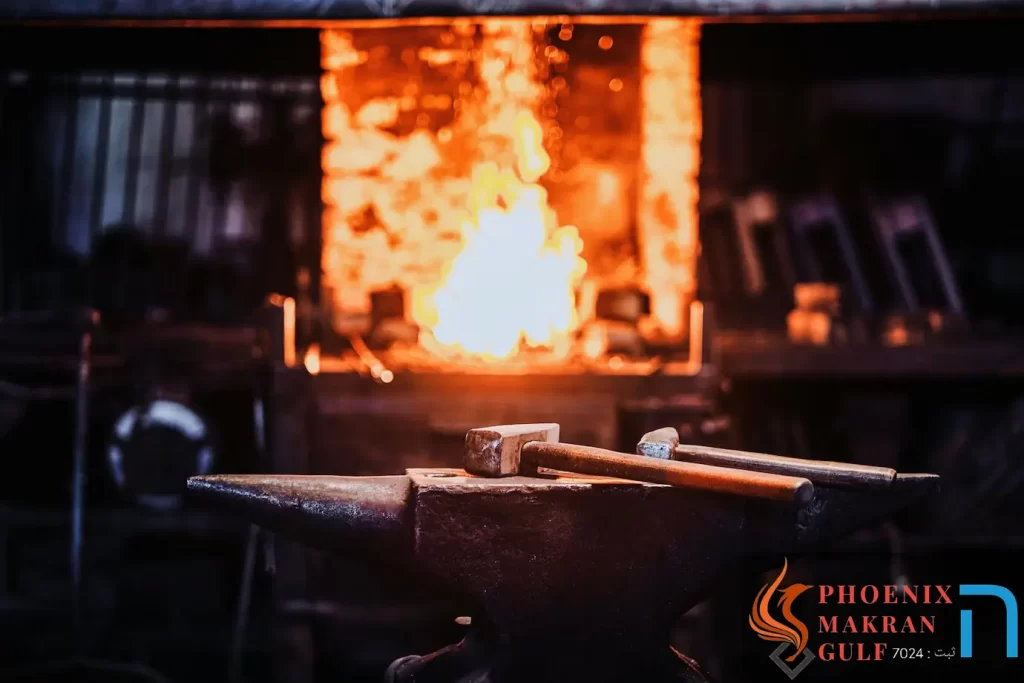
Result of melting point of metals
We checked the melting points of different metals along with the explanations, now let’s see the melting temperature of metals in summary:
- Aluminum 660C or 1220F
- Bronze 1027-1038 °C (1881-1900 °F)
- Brass metal 930°C (1710°F)
- Chrome 1860°C (3380°F)
- Copper 1084 °C (1983 °F)
- Gold 1063°C (1945°F)
- Cast iron 1204°C (2200°F)
- Lead 328°C (622°F)
- Nickel 1453°C (2647°F)
- Platinum 1770°C (3218°F)
- Silver 961 °C (1762 °F)
- Carbon steel 1425-1540 °C (2597-2800 °F)
- Stainless steel 1375-1530°C (2500-2785°F)
- Titanium 1670°C (3038°F)
- Zinc at 420°C (787°F)
- Tungsten 3400°C (6152°F)
Design and production of smelting and recycling machines
Phoenix Makran Gulf Company, is a manufacturer of shredders and recycling machines., for information and orders, refer to the link below.


